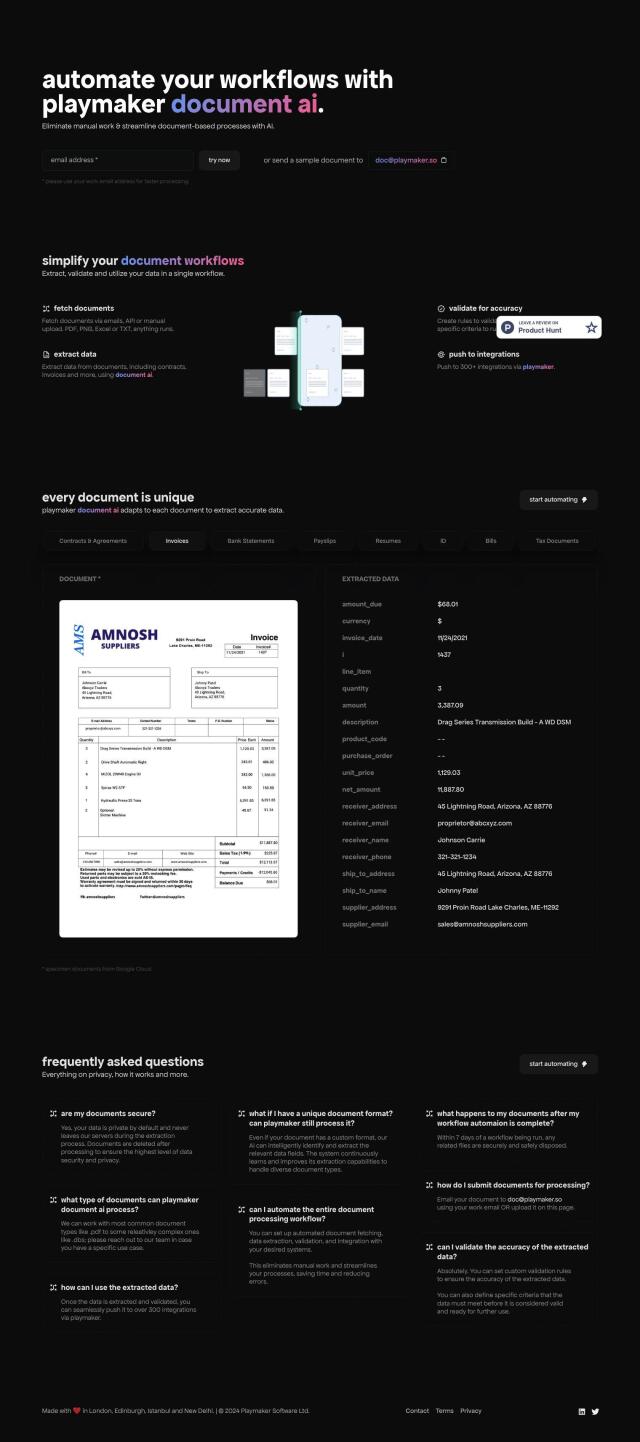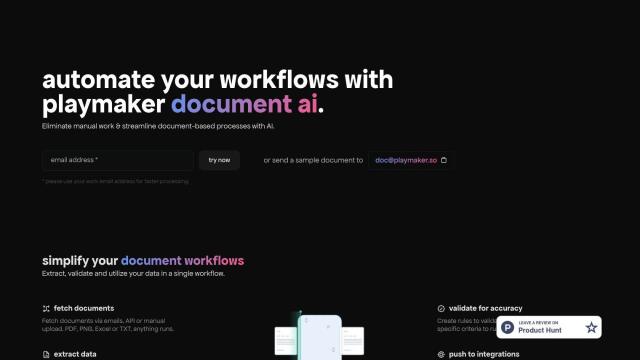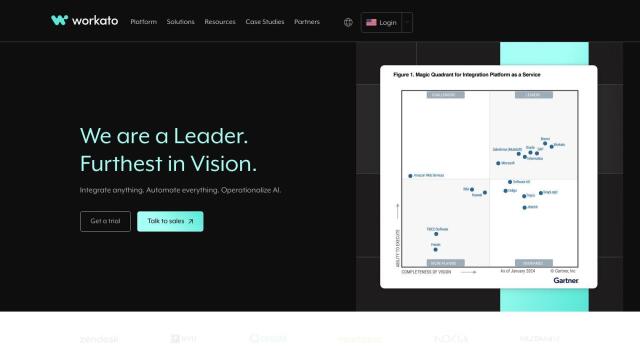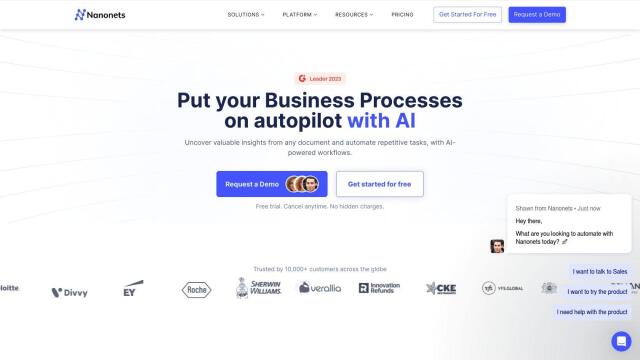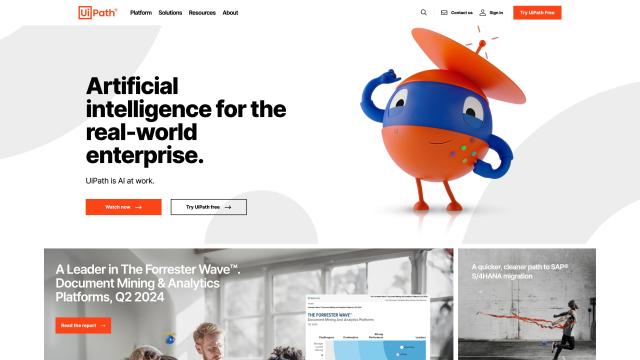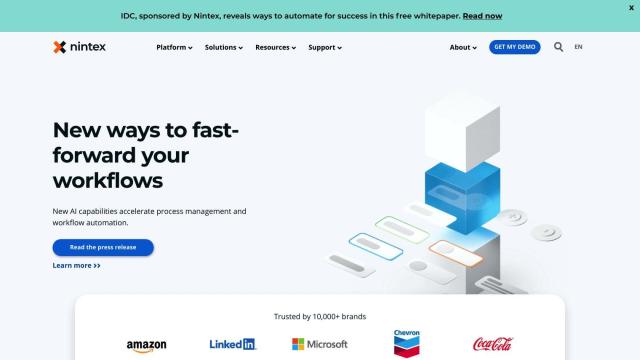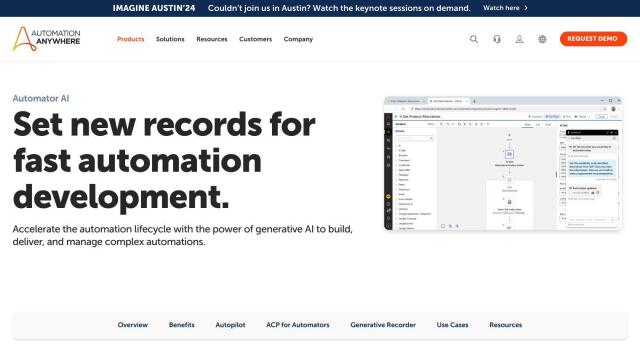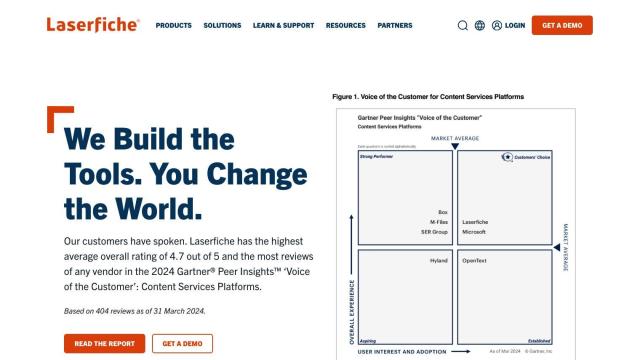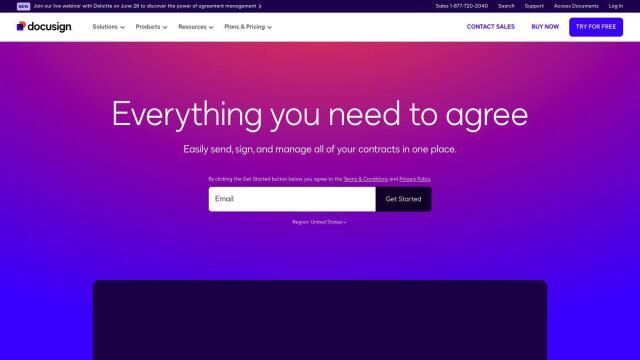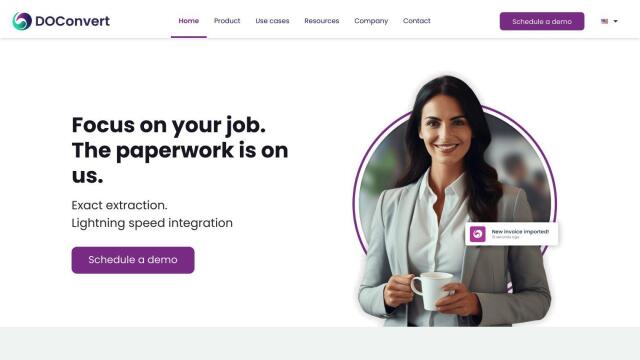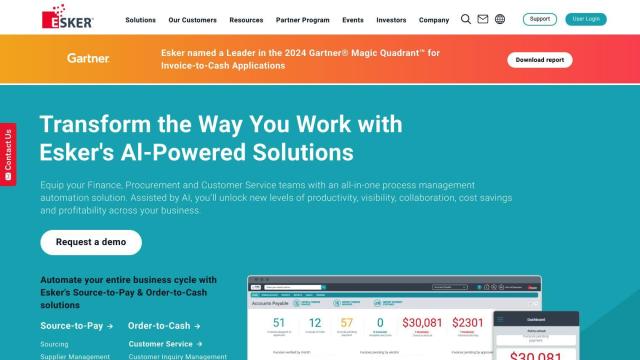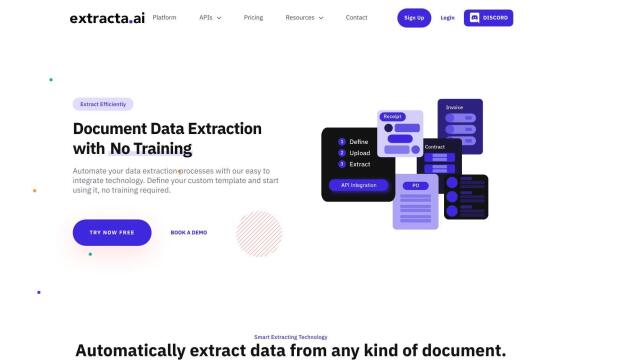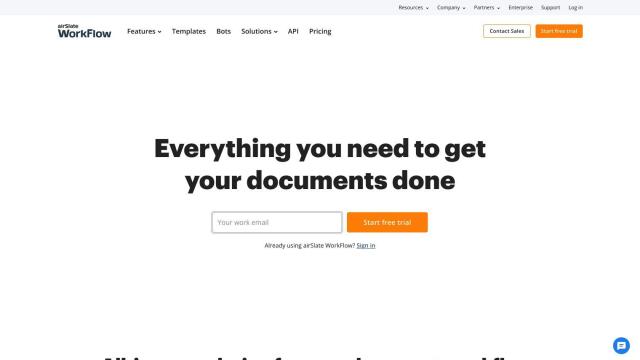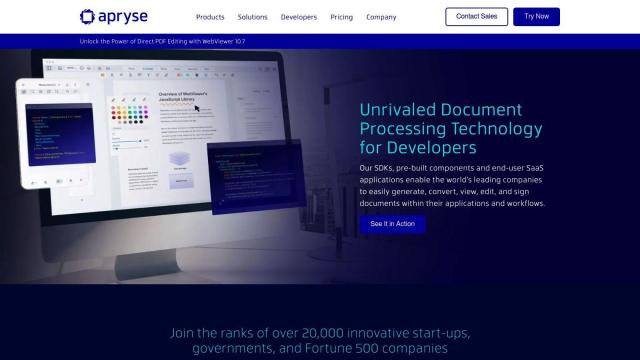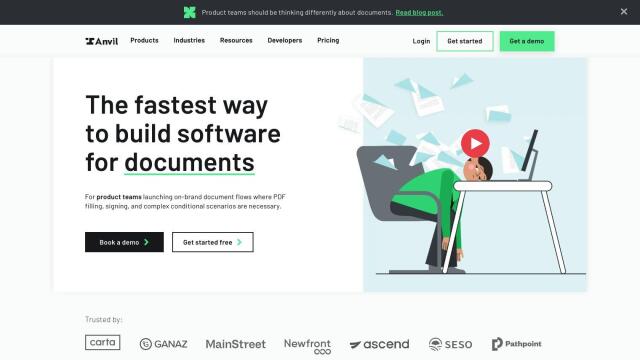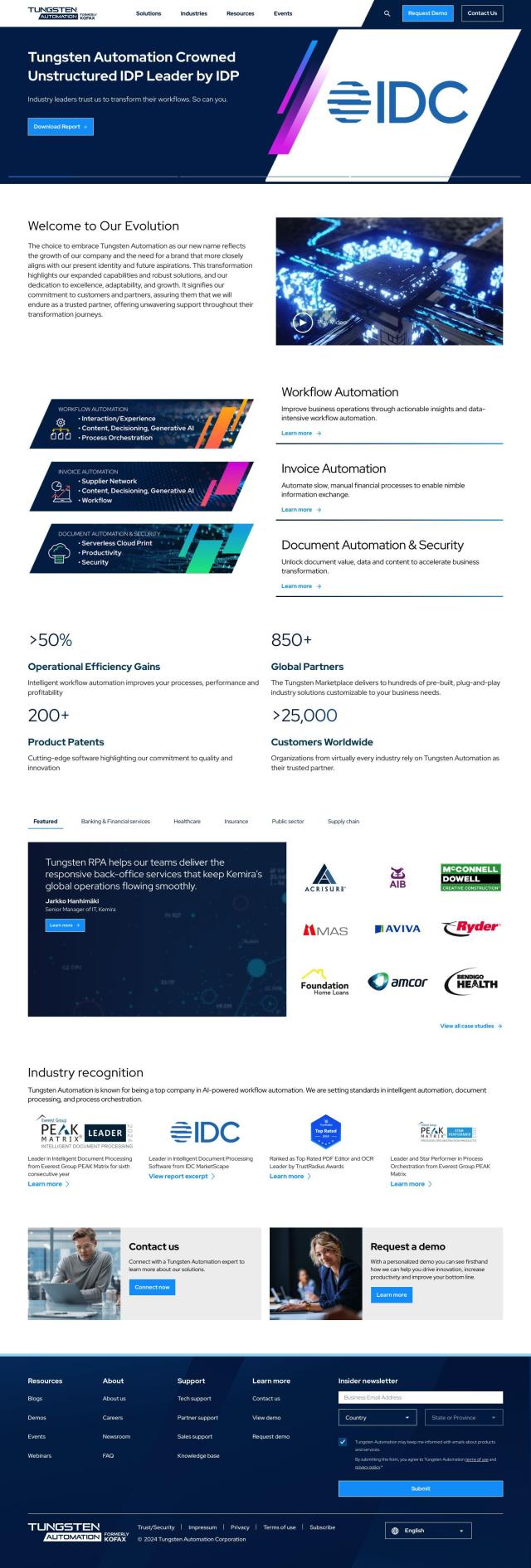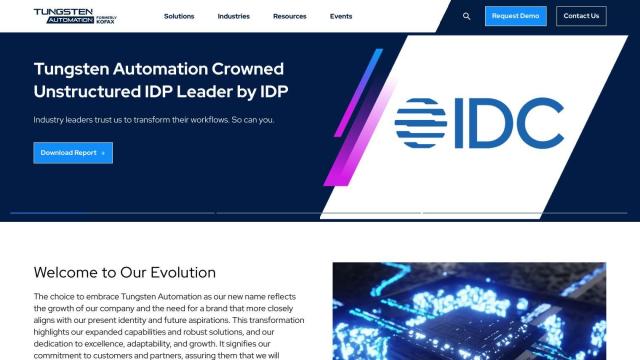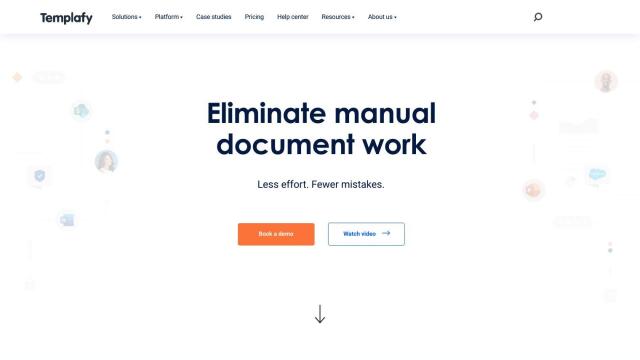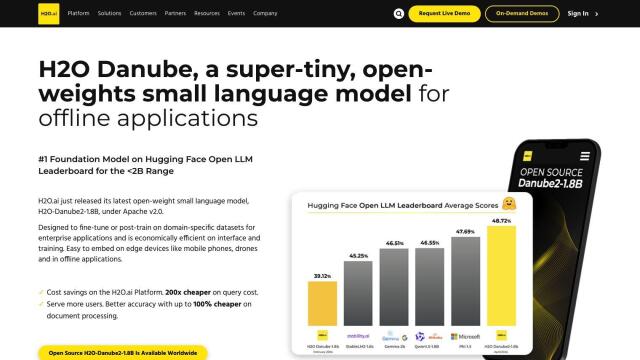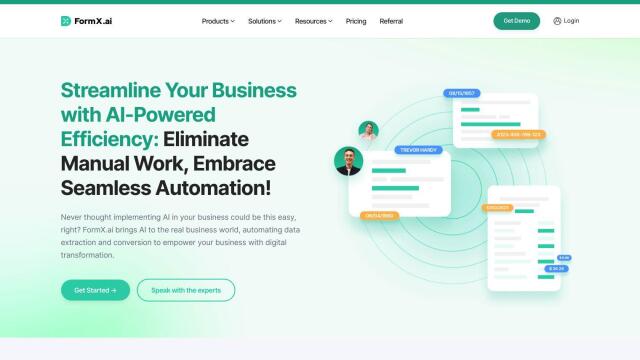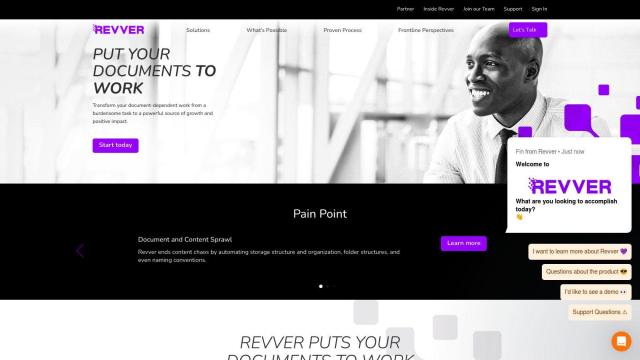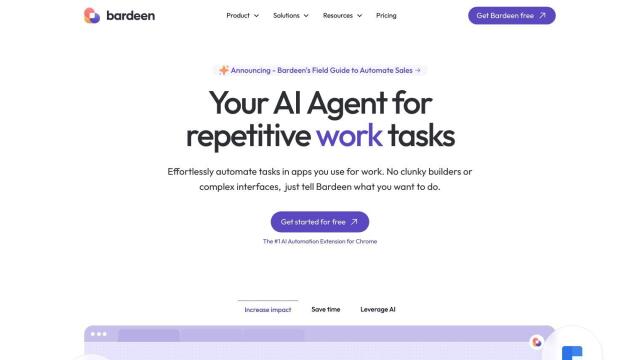Question: I'm looking for a solution that integrates with popular automation tools to streamline document workflows.


ABBYY
If you want a tool that can integrate with common automation tools to help you get documents working the way you want, ABBYY is a serious contender. It combines AI, NLP and OCR to automate business processes, including intelligent document processing and data extraction. With its marketplace for custom-built AI models and integration with tools like Robotic Automation, ABBYY can handle documents in any format and language. It works with a range of industries and has a low-code/no-code interface for citizen developers.

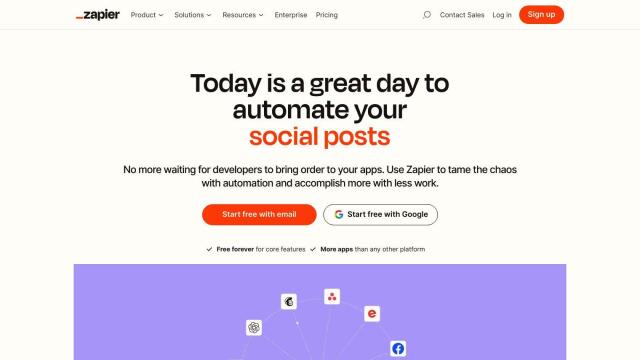
Zapier
Another top contender is Zapier, which connects to more than 7,000 apps to automate processes. It offers a full-featured workflow management system with AI automation and enterprise-grade security. You can create custom automation with Zaps, Tables and Interfaces, which makes it a good choice for tracking leads, customer service and data management. Zapier is good for startups, SMBs and enterprises, helping you get more done and grow faster.
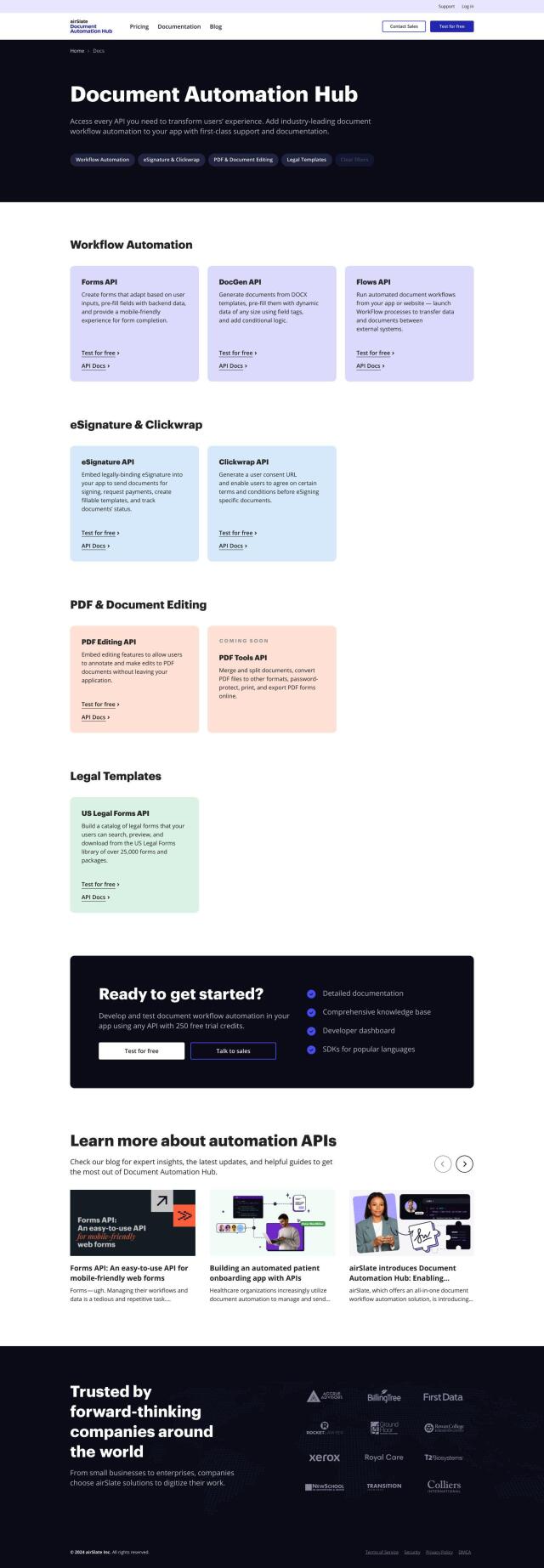
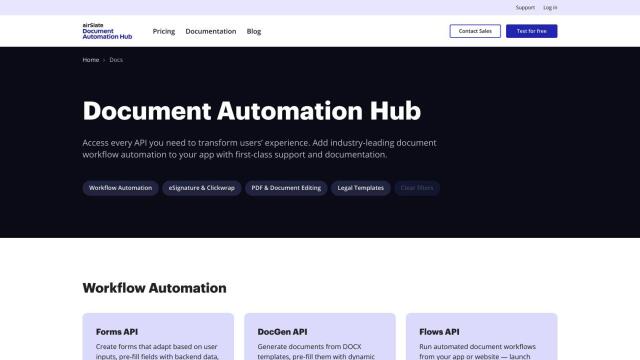
Document Automation Hub
If you're a developer who wants to build document workflow automation into your own apps, Document Automation Hub is a good option. It offers APIs for form creation, document generation, electronic signatures and PDF editing. With features like adaptive forms and a library of more than 25,000 legal forms, it could help you cut deployment and maintenance costs while automating things like patient onboarding and eSignature processes.

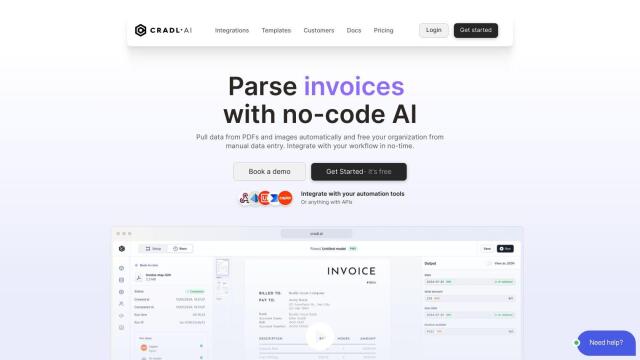
Cradl AI
Last, Cradl AI is designed to automate internal document workflows using AI to extract data from unstructured documents. It works with multiple languages and can integrate with no-code tools, so it's good for tasks like invoice processing and receipt management. With a focus on security and compliance, Cradl AI ensures data accuracy and user security through its continuous model improvement and native connectors for easy integration.
